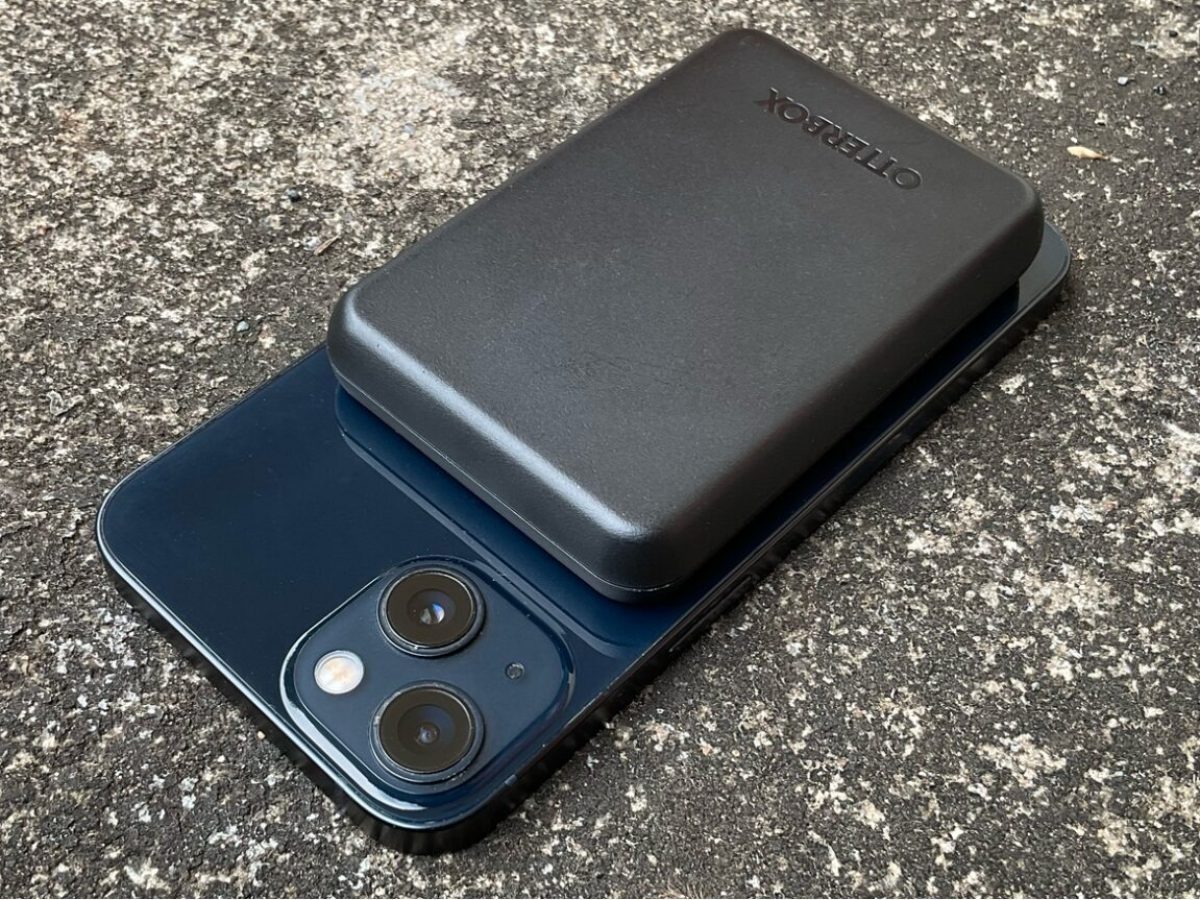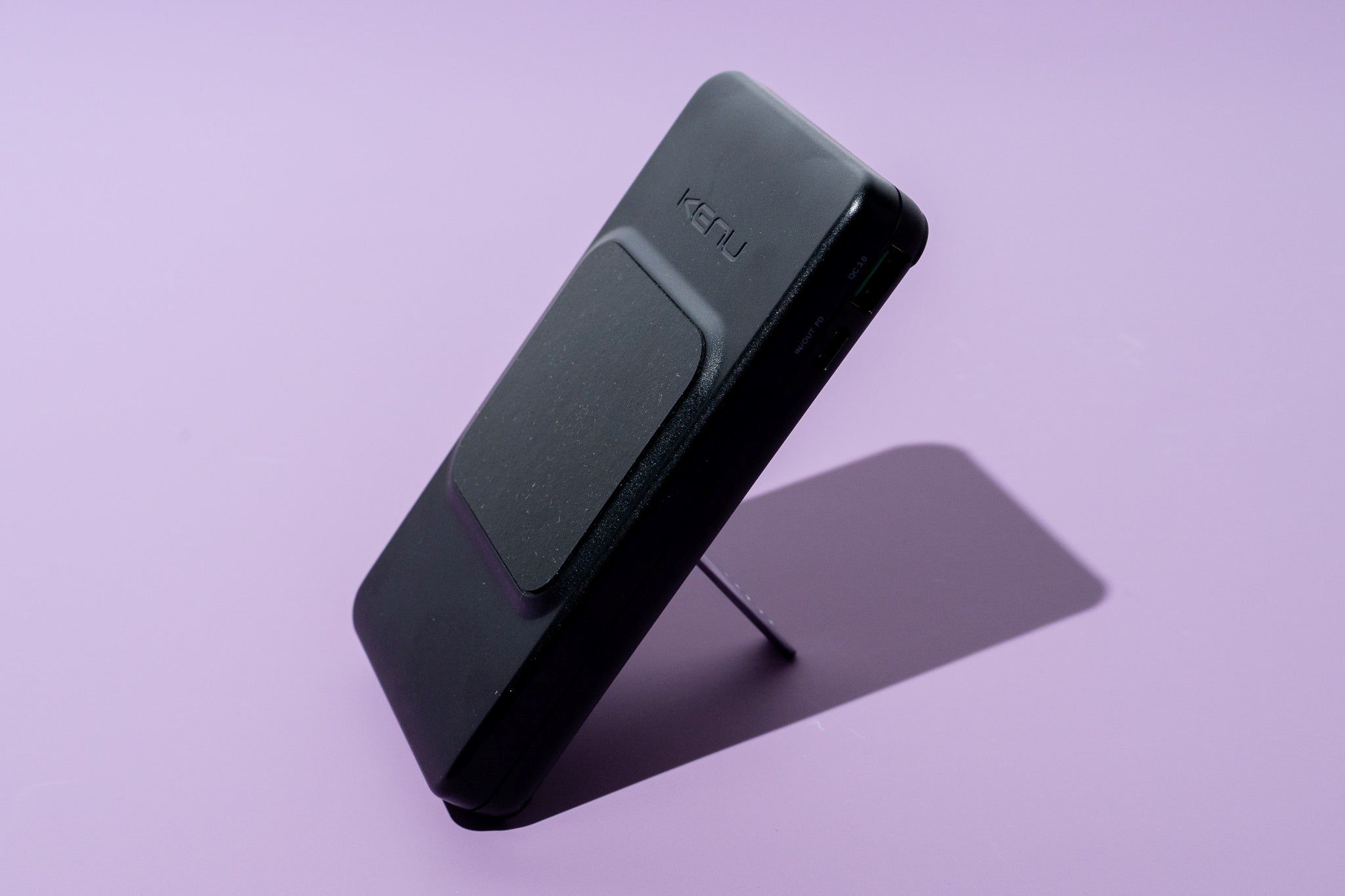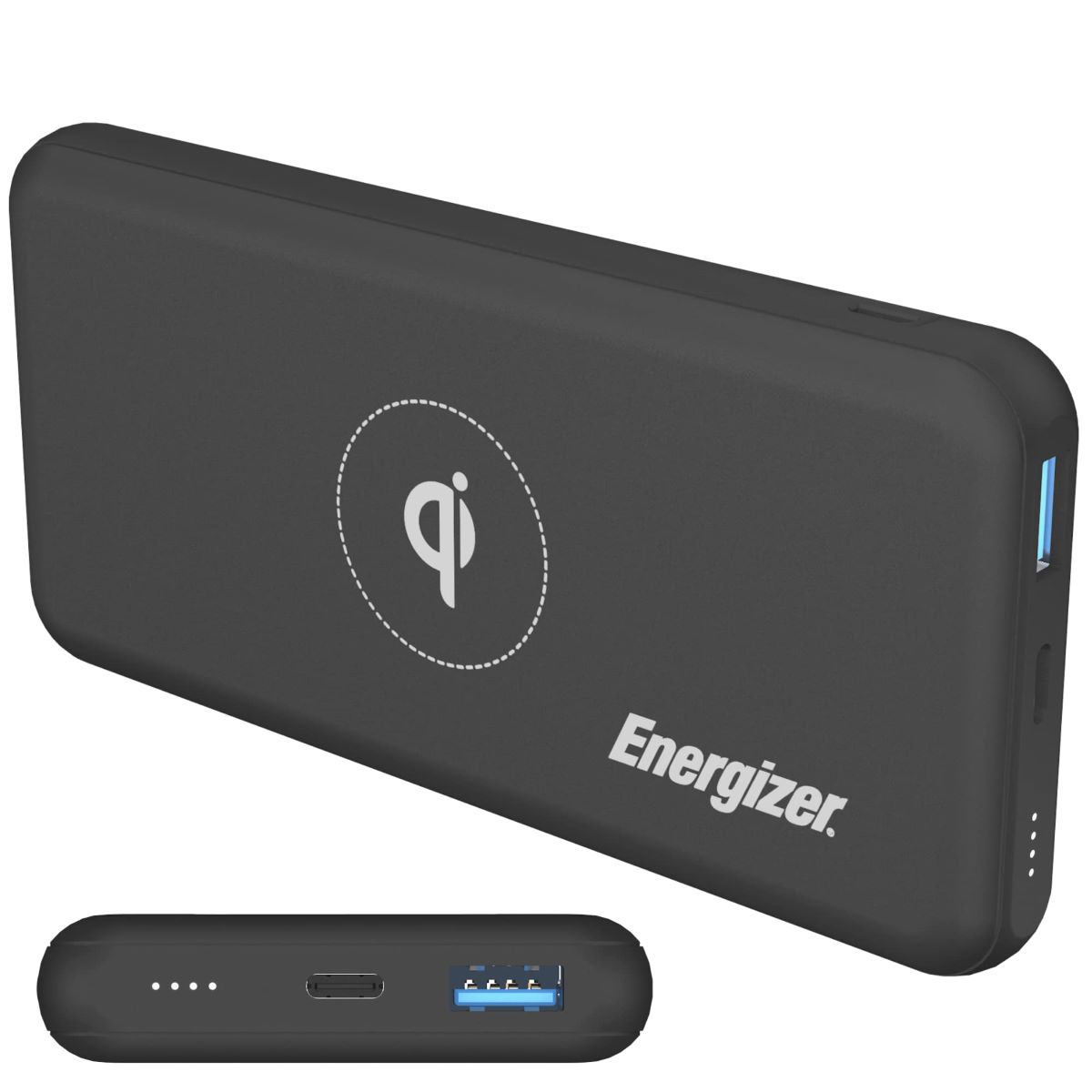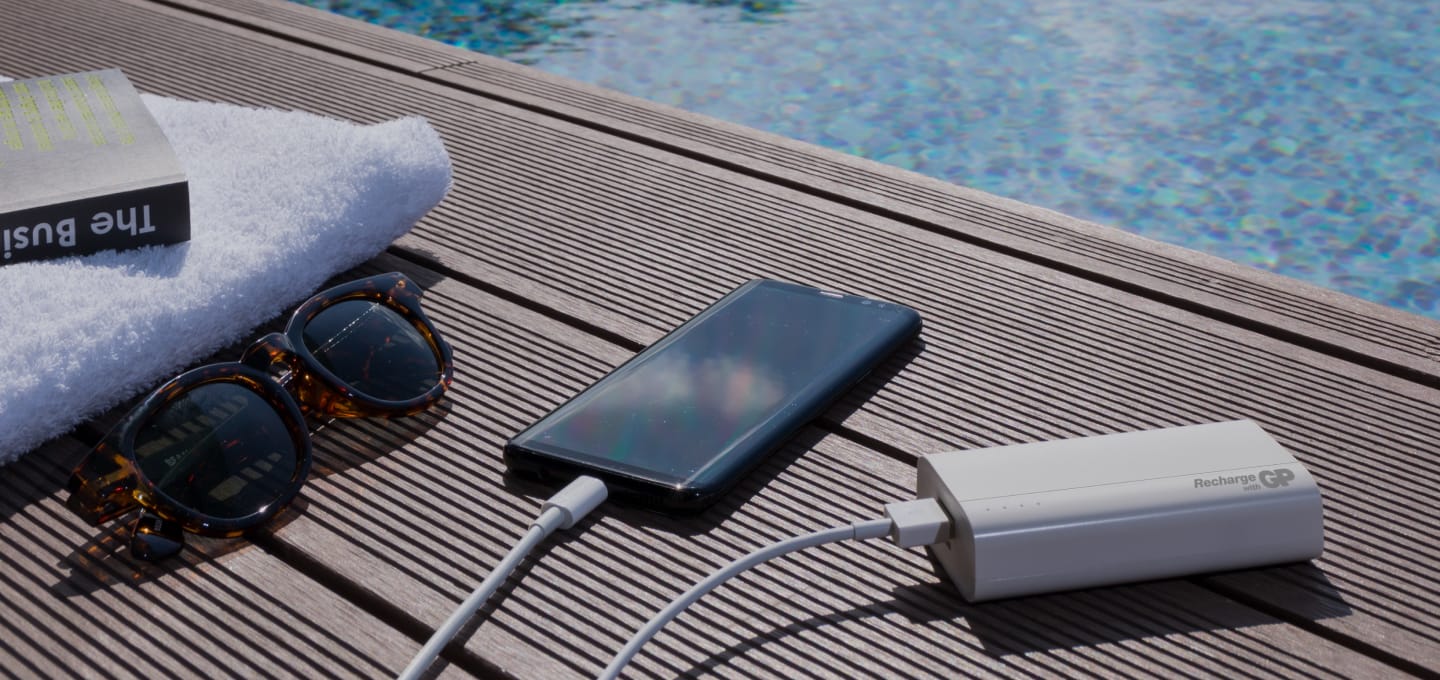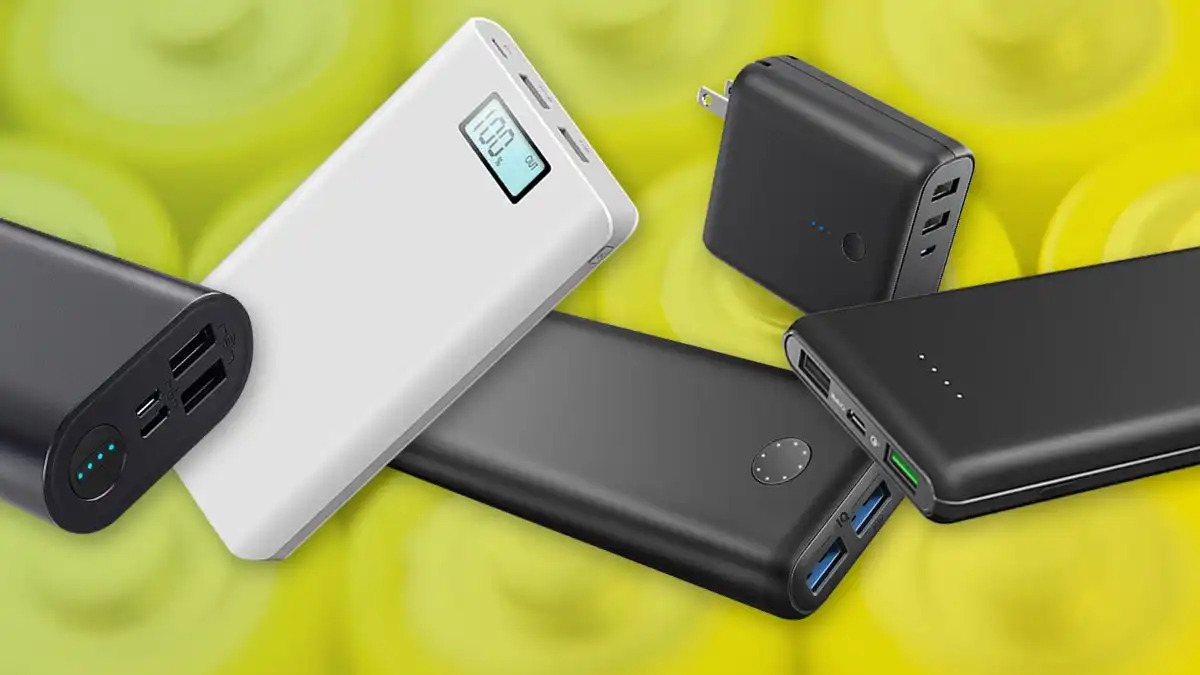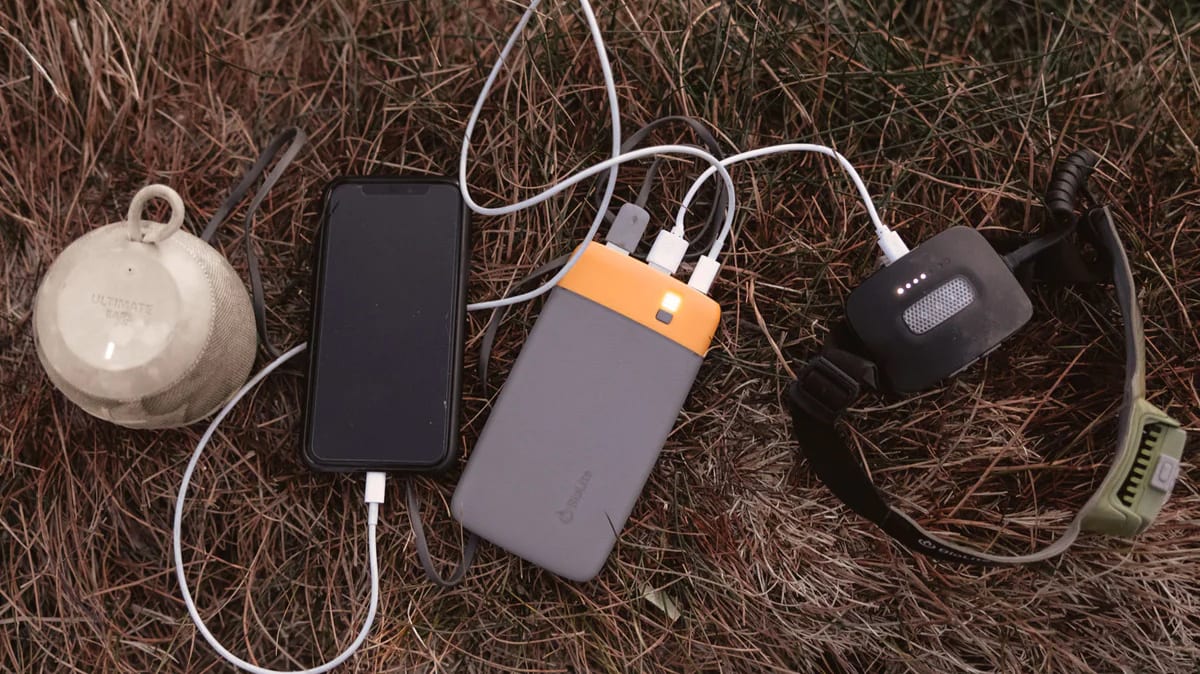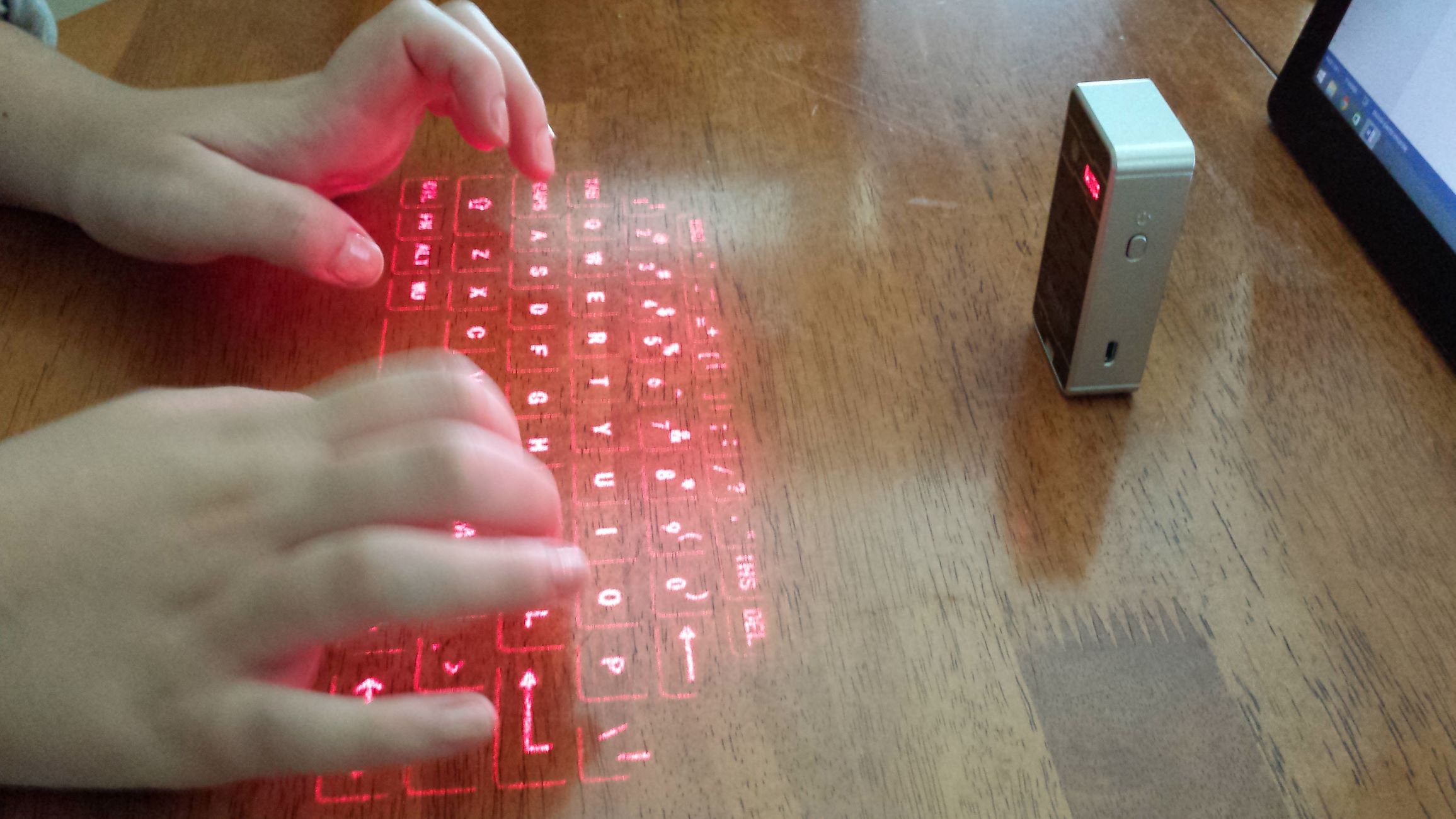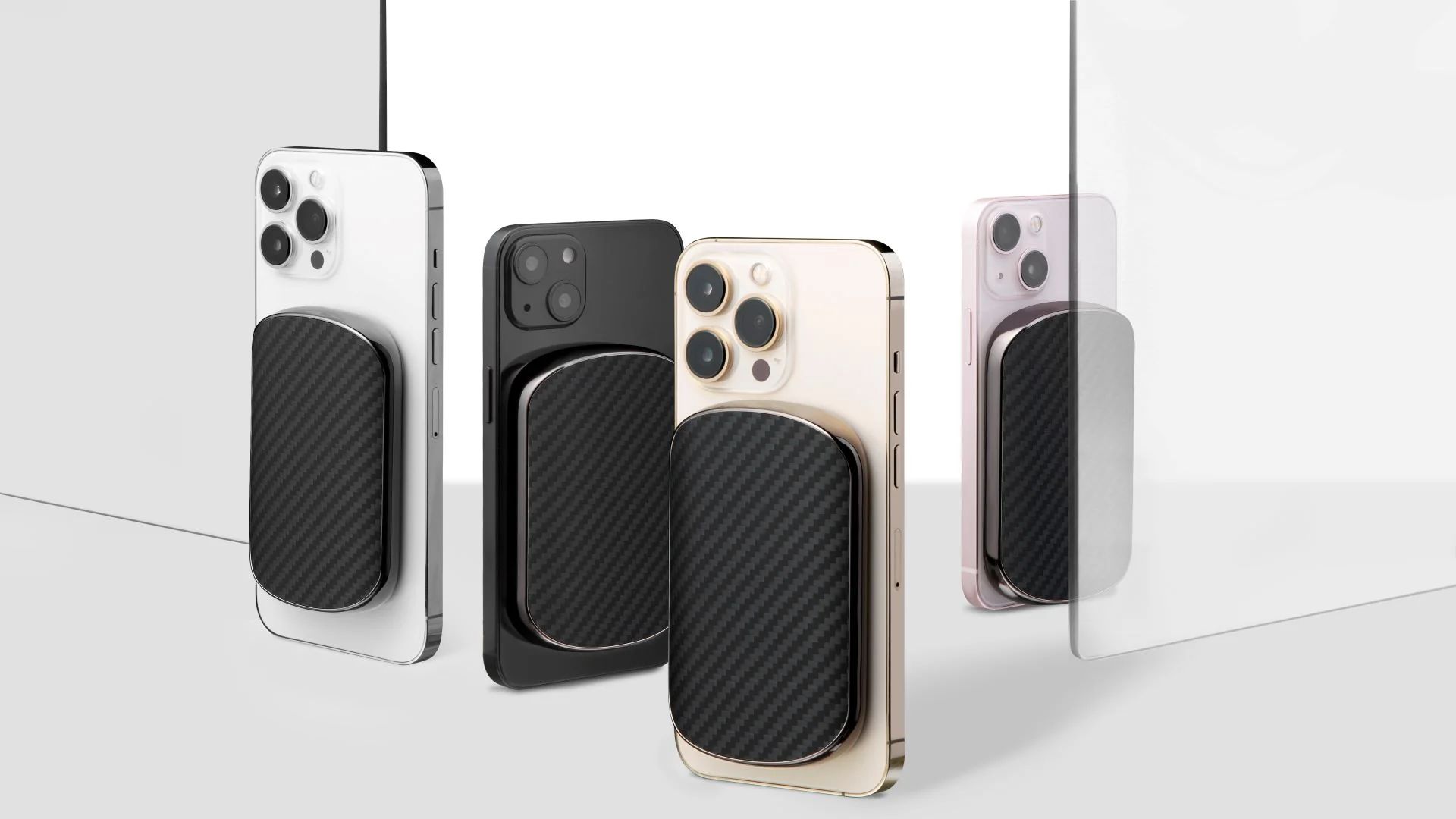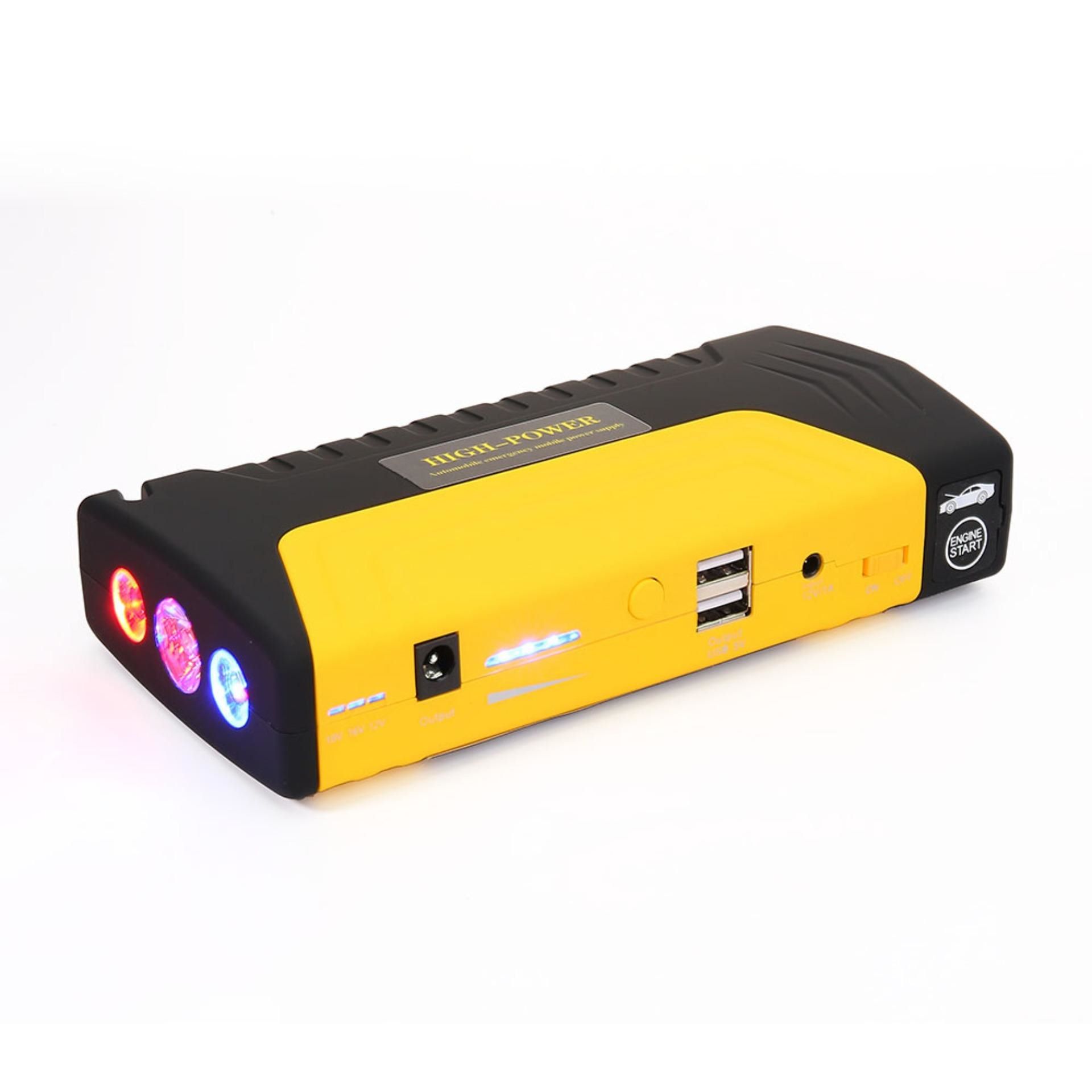Introduction
Welcome to the world of wireless power banks! In this tech-savvy era, staying connected to our devices has become an essential part of our daily lives. Whether it’s a smartphone, tablet, or smartwatch, we rely on these gadgets for communication, entertainment, and productivity. However, it can be frustrating when our devices run out of battery power, especially when we’re on the go.
This is where wireless power banks come to the rescue. They offer a convenient and efficient way to charge our devices without the hassle of cables. With a wireless power bank, you can say goodbye to the tangled mess of wires and enjoy the freedom of wireless charging.
So, what exactly is a wireless power bank? Simply put, it is a portable battery pack that utilizes wireless charging technology to replenish the battery life of your devices. Just like traditional power banks, wireless power banks store electrical energy, but the key difference lies in the way they transfer power to your devices.
In this article, we will explore the ins and outs of wireless power banks, including how they work, the benefits they offer, and how to choose the right one for your needs. We will also provide a step-by-step guide on how to use a wireless power bank to charge your devices wirelessly or with a cable. Additionally, we will touch on the maintenance and care tips to prolong the lifespan of your power bank.
So, whether you’re a frequent traveler, a busy professional, or just someone who wants the convenience of wireless charging, read on to discover how a wireless power bank can become your go-to charging solution.
What is a wireless power bank?
A wireless power bank, also known as a wireless charger or portable wireless charging pad, is a device that allows you to charge your compatible devices without the need for cables or outlets. It operates on the principle of electromagnetic induction, transmitting energy to your device through a process called inductive charging.
Unlike traditional power banks that rely on cables to connect to your device, a wireless power bank utilizes wireless technology to transfer power. This means you can simply place your device on the charging pad or dock, and it will start charging automatically.
Wireless power banks are equipped with a built-in coil that generates an electromagnetic field. When your compatible device comes into contact with this field, the energy is transferred to its internal battery, allowing it to charge. The device needs to have wireless charging capabilities in order to harness this power.
It’s worth noting that wireless power banks come in various shapes and sizes. Some are designed as flat pads, while others are in the form of portable battery packs with built-in wireless charging capabilities. The capacity of these power banks can vary, ranging from 5,000mAh to 20,000mAh or more, allowing you to charge your devices multiple times on a single charge.
Furthermore, wireless power banks are compatible with a range of devices, including smartphones, smartwatches, and headphones, as long as they support wireless charging. Many popular brands, such as Apple, Samsung, and Huawei, have incorporated wireless charging capabilities into their devices, making them compatible with wireless power banks.
In summary, a wireless power bank offers the convenience of cable-free charging, allowing you to charge your compatible devices on the go. With its portable and wireless capabilities, it has become an essential accessory for those who are always on the move and need a reliable source of power for their devices.
How does a wireless power bank work?
The functioning of a wireless power bank revolves around the principles of electromagnetic induction and inductive charging. Here’s a step-by-step breakdown of how it works:
- Power Conversion: When you connect your wireless power bank to a power source, such as a wall adapter or a USB port, it utilizes its internal circuitry to convert the incoming AC power into DC power. This converted power is then stored in the power bank’s internal battery.
- Electromagnetic Field Generation: Once the power bank is charged, it is ready to transmit energy wirelessly. It contains a coil that generates an alternating electromagnetic field when an electric current passes through it. This magnetic field is what enables the wireless charging functionality.
- Device Recognition: When you place your compatible device on the power bank’s charging surface, the device’s internal coil aligns with the power bank’s coil. This alignment is crucial for the energy transfer to occur.
- Energy Transfer: As the coils are aligned, the power bank’s coil creates a magnetic field that induces a current in the device’s coil. This process, known as electromagnetic induction, transfers energy from the power bank to the device without the need for physical connections.
- Battery Charging: The current induced in the device’s coil is converted back into DC power by its internal circuitry. This DC power charges the device’s battery, replenishing its energy.
- Charging Completion: Wireless power banks are equipped with smart charging technology that detects the device’s charging status. Once the device reaches its full battery capacity, the power bank automatically stops supplying power, preventing overcharging and protecting the device’s battery life.
It’s important to note that in order for wireless charging to work, your device must support wireless charging technology. Most modern smartphones and other portable electronic devices come with built-in wireless charging capabilities. However, if your device doesn’t have this feature, you can still benefit from wireless charging by using a wireless charging receiver or case that is compatible with your device.
In summary, a wireless power bank works by converting power from an external source into stored energy, generating an electromagnetic field, aligning with a compatible device’s internal coil, transferring energy through electromagnetic induction, and charging the device’s battery. It offers a convenient and cable-free solution for charging your devices on the go.
Benefits of using a wireless power bank
Wireless power banks come with a multitude of benefits that make them a popular choice among tech-savvy individuals. Let’s explore some of the key advantages of using a wireless power bank:
- Convenience: One of the major benefits of a wireless power bank is the convenience it offers. With wireless charging, you can simply place your device on the power bank’s charging surface and let it charge without the hassle of dealing with cables and connectors. This ease of use is especially helpful when you’re on the go or in a busy environment.
- Freedom of Movement: Wireless charging gives you the freedom to move around while your device charges. You don’t have to be tethered to a power outlet, allowing you to use your device or attend to other tasks without interruption.
- Reduced Wear and Tear: Traditional charging cables are prone to wear and tear due to frequent bending and plugging in and out. By eliminating the need for cables, wireless charging helps reduce the wear and tear on your device’s charging port and cables, increasing their longevity.
- Compatibility: Wireless power banks are compatible with a wide range of devices that support wireless charging. Whether you have a smartphone, smartwatch, or wireless earbuds, you can charge them all on the same power bank, eliminating the need for multiple chargers or cables.
- Flexibility: Wireless power banks are designed to be portable and compact, making them easy to carry wherever you go. Whether you’re traveling, working in a coffee shop, or simply relaxing at home, you can have a reliable source of power for your devices without the need for a fixed power outlet.
- Safety: Wireless power banks are built with safety features to prevent overcharging, overheating, and short circuits. They typically come with advanced circuitry that regulates the charging process and protects your devices from potential damage, providing you with peace of mind.
These are just a few of the benefits that wireless power banks offer. They provide a convenient and efficient way to keep your devices powered up whenever and wherever you need them. Whether you’re a frequent traveler, a busy professional, or simply someone who values the convenience of wireless charging, a wireless power bank is a valuable companion to have.
Choosing the right wireless power bank
When it comes to selecting a wireless power bank, there are a few factors to consider to ensure you choose the right one for your needs. Here are some important points to keep in mind:
- Capacity: The capacity of the wireless power bank determines how many times it can charge your devices. Consider the battery capacity of your devices and choose a power bank with a capacity that can meet your charging needs. Common capacities range from 5,000mAh to 20,000mAh or more.
- Compatibility: Check the compatibility of the power bank with your devices. Ensure that your devices support wireless charging and that the power bank is compatible with the wireless charging standards such as Qi (pronounced ‘chee’). This will ensure efficient and effective charging.
- Output Power: Look for a power bank that provides sufficient output power to charge your devices quickly. The output power is measured in watts, and a higher output power will result in faster charging times.
- Design and Size: Consider the design and size of the power bank to ensure it suits your preferences and needs. Some power banks are slim and portable, while others may be more bulky but offer higher battery capacity. Choose one that fits your lifestyle and usage habits.
- Additional Features: Some power banks come with additional features such as built-in cables, LED indicators, and multiple USB ports. These features can enhance the usability and functionality of the power bank, so choose one that offers the features that are important to you.
- Brand and Quality: Opt for reputable brands that have a track record of producing reliable and high-quality power banks. Read reviews and check customer feedback to ensure you are investing in a power bank that will stand the test of time.
By considering these factors, you can choose a wireless power bank that aligns with your specific needs and requirements. Remember that the right power bank can greatly enhance your charging experience and provide you with a reliable source of power for your devices.
Step-by-step guide on how to use a wireless power bank
Using a wireless power bank is a straightforward process. Follow these simple steps to ensure a seamless charging experience:
- Charge the power bank: Before using the wireless power bank, make sure it is fully charged. Connect it to a power source using the provided cable and plug, or by placing it on a wireless charging pad if it supports wireless charging.
- Check compatibility: Ensure that your device is compatible with wireless charging. If it doesn’t have built-in wireless charging capabilities, you may need to purchase a wireless charging receiver or case that is compatible with your device.
- Place your device: Position your device on the wireless charging pad or dock of the power bank. Ensure that the device’s wireless charging receiver or coil aligns with the power bank’s coil for efficient charging.
- Monitor charging: The power bank may have LED indicators to show the charging status. These indicators may display different colors or patterns to indicate if the device is charging or if there is any issue with the charging process. Refer to the user manual of your specific power bank for more details.
- Wireless charging: If your device supports wireless charging, the power bank will start transferring energy wirelessly to your device. Leave your device on the charging pad until it reaches the desired battery level.
- Charging with a cable: If your device does not support wireless charging, you can still use the power bank by connecting it to your device with a compatible charging cable. Simply plug one end of the cable into the power bank’s USB port and the other end into your device’s charging port.
- Monitor charging: As your device charges, periodically check the battery level to ensure it’s progressing as expected. You can check the battery level on your device’s screen or through any charging indicator lights that may be present.
- Charging completion: Once your device reaches the desired battery level, remove it from the wireless charging pad or unplug it from the power bank. This will ensure that your device’s battery is not overcharged.
- Recharge the power bank: After using the wireless power bank, recharge it by connecting it to a power source using the provided cable and plug. This will ensure that it’s ready for the next charging cycle.
By following these simple steps, you can make the most of your wireless power bank and keep your devices charged and ready to use whenever you need them.
Charging your devices wirelessly
Charging your devices wirelessly with a power bank offers convenience and eliminates the need for messy cables. Here’s how you can charge your devices wirelessly using a wireless power bank:
- Ensure compatibility: Confirm that your device is compatible with wireless charging. Most modern smartphones, smartwatches, and other electronic devices come with built-in wireless charging capabilities. If your device does not have this feature, you may require a wireless charging receiver or case that is compatible with your specific device.
- Positioning: Place your device on the wireless charging pad or dock of the power bank. Align the device’s wireless charging receiver or coil with the power bank’s charging coil. Most wireless power banks have a designated area marked with icons or symbols to help you align your device correctly.
- Initiate charging: Once your device is properly positioned, the wireless power bank will start charging it automatically. You should see a charging indication on your device’s screen or through any charging indicator lights on the power bank.
- Leave it to charge: Allow your device to charge wirelessly for the desired amount of time. The charging speed may vary depending on the power bank’s output power and your device’s compatibility. Keep in mind that wireless charging may be slightly slower than charging with a cable.
- Monitor progress: Check your device’s battery level periodically to ensure it’s charging as expected. You can do this by checking the battery icon or percentage on your device’s screen or using any charging indicator lights on the power bank, if available.
- Charging completion: Once your device reaches the desired battery level or is fully charged, remove it from the wireless charging pad. This will prevent overcharging and protect your device’s battery life.
Wireless charging offers the convenience of charging your devices without the need for cables. It is ideal for situations where you need to charge multiple devices simultaneously or when you’re on the move. However, keep in mind that not all devices can be wirelessly charged, so it’s important to check your device’s compatibility before attempting wireless charging.
With the help of a wireless power bank, you can enjoy the freedom of cable-free charging and keep your devices powered up with ease.
Charging your devices with a cable
While wireless charging offers convenience, there may be times when you need to charge your devices using a cable. Here’s how you can charge your devices with a cable using a wireless power bank:
- Confirm compatibility: Ensure that your device is compatible with the power bank and the charging cable. Most devices, such as smartphones, tablets, and other electronic gadgets, use USB cables for charging. Make sure you have a compatible cable for your device.
- Connect the cable: Connect one end of the USB cable to the USB output port on the power bank. The USB port may be labeled as “Output” or have a lightning bolt symbol near it. Ensure the connection is secure.
- Plug in your device: Connect the other end of the USB cable to your device’s charging port. Depending on the device, this may be a micro USB, USB-C, or Lightning port. Make sure the connection is secure and the cable is inserted correctly.
- Start charging: Once the cable is connected, the power bank will start supplying power to your device. Look for a charging indication on your device’s screen or any charging indicator lights that may be present on the power bank.
- Monitor progress: Keep an eye on your device’s battery level to track the charging progress. You can check the battery icon or percentage on your device’s screen to see how much it has charged.
- Charging completion: Once your device reaches the desired battery level, unplug it from the power bank to prevent overcharging. It’s important to note that many power banks have an auto-shutoff feature that stops supplying power once the device is fully charged.
- Recharge the power bank: After charging your device, you can recharge the power bank by connecting it to a power source using the provided cable and plug. This will ensure that it’s ready for future charging needs.
Charging your devices with a cable using a wireless power bank is a reliable and widely-used method. It allows you to charge devices that may not support wireless charging or when you require a faster charging speed. Just make sure to use a compatible cable and ensure secure connections to ensure efficient charging.
By utilizing the versatility of both wireless and cable charging, you can keep all your devices powered up and ready for use, no matter where you are.
Additional features and functions
Wireless power banks often come with a range of additional features and functions that can enhance your charging experience. Here are some common ones to look out for when choosing a wireless power bank:
- Built-in cables: Some power banks come with built-in charging cables, eliminating the need for carrying extra cables. These cables are usually retractable or foldable, allowing for convenient storage and less clutter.
- LED indicators: Many power banks are equipped with LED lights that indicate the battery level or charging status. These indicators can help you keep track of how much power is left in the power bank or determine if your device is charging properly.
- Multiple USB ports: Power banks with multiple USB ports allow you to charge multiple devices simultaneously. This feature is especially useful when you have multiple devices to charge or when you’re sharing the power bank with friends or family.
- Fast charging: Some wireless power banks support fast charging technology, such as Quick Charge or Power Delivery. These technologies enable faster charging times for compatible devices, reducing the overall charging time.
- Pass-through charging: Pass-through charging capability allows you to charge both the power bank and your devices simultaneously. This is particularly useful if you have a limited number of power outlets or if you want to use the power bank as a charging hub.
- Wireless charging stand: Certain power banks are designed in the form of a wireless charging stand, allowing you to charge your device at an inclined angle. This feature is handy for watching videos, making video calls, or using your device while it charges.
- Smart safety features: Many wireless power banks incorporate advanced safety features to protect your devices from overcharging, overheating, and short circuits. These features help safeguard your devices and ensure safer charging experiences.
When selecting a wireless power bank, consider which additional features are important to you based on your specific charging needs and preferences. While these features may vary across different power banks, they can make a significant difference in terms of convenience, usability, and overall charging experience.
By choosing a wireless power bank that offers the additional functionalities you desire, you can make the most out of your charging sessions and ensure your devices stay powered up throughout the day.
Maintenance and care tips
To ensure the longevity and optimal performance of your wireless power bank, it’s essential to follow proper maintenance and care practices. Here are some tips to keep your power bank in good condition:
- Avoid extreme temperatures: High temperatures can negatively affect the battery life of your power bank. Avoid exposing your power bank to direct sunlight or placing it near sources of heat. Similarly, extremely cold temperatures can also impact performance, so try to keep your power bank at a moderate temperature.
- Clean regularly: Dust, dirt, and debris can accumulate on the charging surface and ports of your power bank, affecting its charging efficiency. Regularly clean these areas with a soft, dry cloth to remove any debris that may hinder the charging process.
- Handle with care: Power banks are generally sturdy, but it’s still important to handle them with care. Avoid dropping or subjecting the power bank to unnecessary shocks or impacts that may damage the internal components.
- Store properly: When not in use, store your power bank in a cool and dry place. Avoid storing it in humid environments or near liquids, as moisture can damage the internal circuitry of the power bank.
- Charge regularly: To maintain the battery life of your power bank, it’s recommended to charge it regularly, even if you’re not using it frequently. Over time, the battery may deplete if left unused for extended periods. Charging it every few months can help extend its lifespan.
- Use the right cables and charger: When charging your power bank, always use the provided cables and charger or a compatible one. Using unauthorized or counterfeit cables and chargers can damage both your power bank and your devices.
- Avoid overcharging: To prevent overcharging and maximize the lifespan of the power bank’s battery, unplug it from the power source once it’s fully charged. Continuous charging beyond full capacity can cause stress to the battery and affect its overall performance.
Following these maintenance tips will help ensure that your wireless power bank remains in top condition, providing reliable and efficient charging for your devices. Proper care will not only extend the lifespan of your power bank, but also help maintain its performance over time.
Conclusion
Wireless power banks have revolutionized the way we charge our devices. With the convenience of cable-free charging and the ability to stay connected on the go, these power banks have become an essential accessory for tech-savvy individuals.
In this article, we explored the concept of wireless power banks and how they work. We discussed the benefits of using a wireless power bank, including the freedom of movement, reduced wear and tear on cables, and compatibility with a wide range of devices. We also provided a step-by-step guide on how to use a wireless power bank, whether through wireless charging or using a cable.
Additionally, we highlighted the importance of choosing the right power bank based on factors such as capacity, compatibility, output power, design, and additional features. These considerations will ensure that you select a power bank that suits your specific needs and preferences.
Moving forward, it’s crucial to be mindful of maintenance and care tips to prolong the lifespan and optimize the performance of your wireless power bank. By following simple practices such as avoiding extreme temperatures, regular cleaning, proper handling, and correct storage, you can maintain the power bank’s reliability and effectiveness.
So, whether you’re a frequent traveler, a busy professional, or a gadget enthusiast, a wireless power bank can be your reliable companion in keeping your devices powered up wherever you go. Harness the convenience of wireless charging and enjoy the freedom and flexibility that wireless power banks offer.







